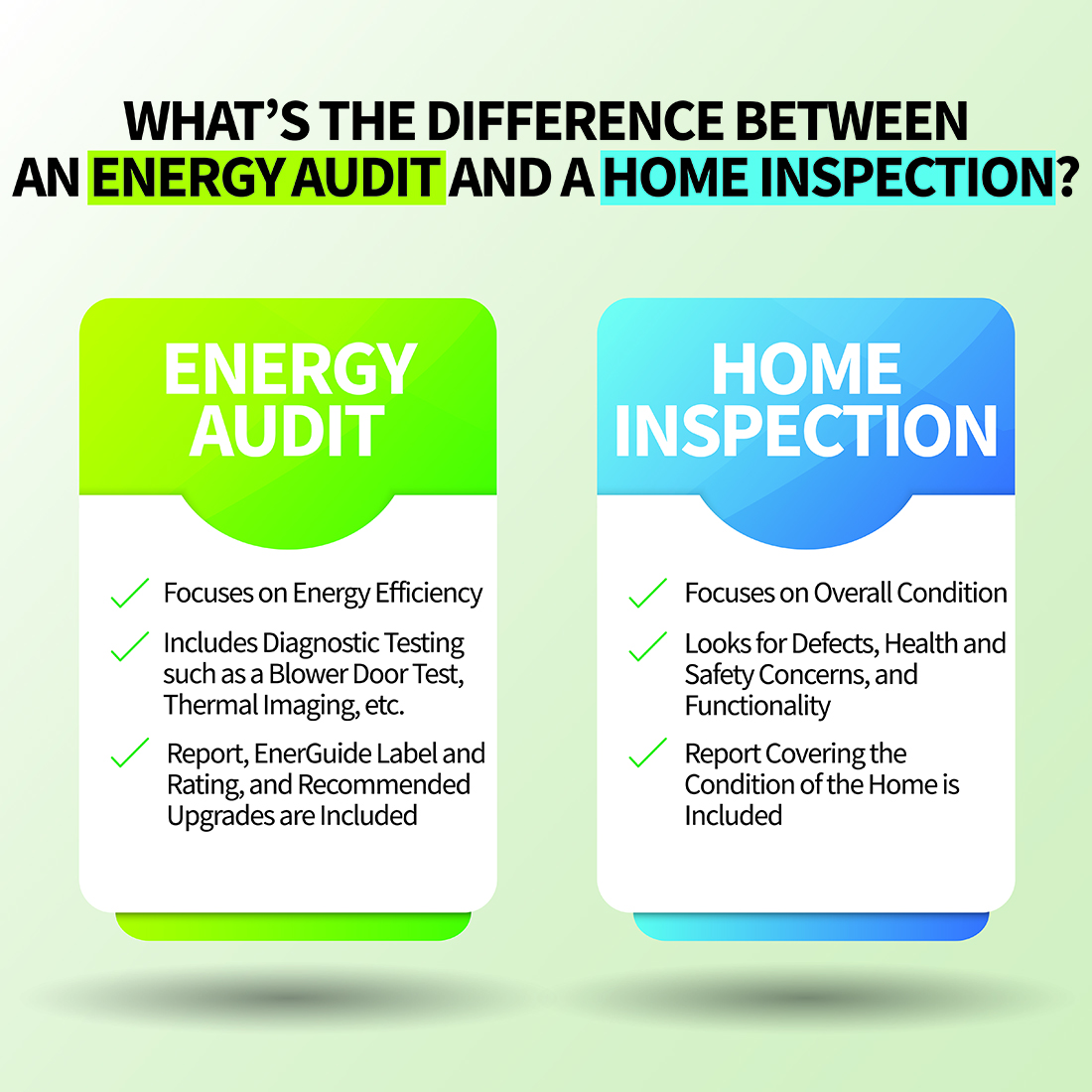Go beyond weatherstripping with energy testing
Go beyond weatherstripping with energy testing
Blog Article
The Function of Energy Screening in Accomplishing an Airtight Option for Your Building
Power testing is essential for homeowner seeking to create a closed setting. It identifies air leaks and ineffectiveness that can compromise power efficiency. Usual perpetrators include gaps around windows and doors. Utilizing techniques like blower door tests and thermal imaging, homeowners can get insights right into their residential or commercial property's susceptabilities (air tight solutions). Comprehending these findings is vital. What steps should be taken when air leakages are identified? The responses hold the trick to enhanced convenience and financial savings
Recognizing Power Testing and Its Significance
Energy screening plays a crucial function in evaluating the airtightness of structures and structures. By determining air leakage, this method supplies important insights right into a home's energy efficiency, thermal comfort, and general performance. Airtight structures lower power intake, making sure that heating & cooling systems run effectively. This testing process generally involves methods such as blower door tests, which produce a controlled atmosphere to determine unintended air pathways.Understanding the significance of power screening expands beyond conformity with building ordinance; it fosters a proactive method to sustainability. Identifying air leakages early can result in prompt removal, inevitably boosting interior air quality and minimizing energy expenses. In addition, energy screening contributes to the long life of structure materials by lessening wetness accumulation and related damage. As recognition of environmental effect boosts, energy screening ends up being an indispensable tool for home builders and homeowners aiming for high-performance properties.
Typical Sources of Air Leaks in Characteristic
Recognizing common sources of air leaks is vital for boosting a residential or commercial property's energy efficiency. These leaks often occur in numerous locations of a building, considerably affecting home heating and air conditioning expenses. Usual offenders consist of spaces around doors and home windows, where seals may wear away gradually. In addition, electric outlets and switches can develop pathways for air exchange if not properly shielded. Attics and basements are additionally frequent resources, specifically where walls meet the roof or the structure. Other prospective leak factors include plumbing infiltrations, airing vent systems, and the locations surrounding smokeshafts. Furthermore, older properties may deal with degraded building materials, boosting susceptability to air infiltration. By recognizing these typical resources, property proprietors can take positive steps to seal leaks, thereby improving total energy performance and convenience within their rooms. Addressing these issues is an important part of developing a closed solution for any type of residential property.
Approaches of Energy Testing: Blower Door and Thermal Imaging
Reliable power screening approaches, such as blower door examinations and thermal imaging, play a necessary function in detecting air leakages within a residential or commercial property. The blower door examination entails depressurizing a structure or pressurizing to gauge airflow and identify leakages. A calibrated follower is set up in an outside entrance, and the resulting stress distinction highlights locations of unwanted air infiltration. This technique quantifies the general airtightness of the structure.Thermal imaging matches blower door tests by visually finding temperature variants on surfaces, exposing concealed air leaks. Infrared cameras catch heat loss or gain, permitting for exact identification of issue locations, such as inadequately insulated wall surfaces or voids around doors and windows. air tight solutions. With each other, these techniques supply a complete evaluation of a residential property's energy performance, allowing homeowner to attend to air leakages effectively and improve total performance
Advantages of Identifying Air Leaks
Recognizing air leakages uses significant advantages for power performance and indoor convenience. By sealing these leaks, buildings can decrease energy consumption, resulting in lower utility bills and a minimized carbon impact. In addition, enhanced airtightness contributes to a more stable interior atmosphere, improving general convenience for occupants.
Energy Efficiency Improvements
Spotting air leaks is essential for enhancing energy efficiency in structures. Identifying these leaks allows homeowner to deal with areas where conditioned air gets away or unconditioned air goes into, bring about significant energy cost savings. By sealing spaces and splits, buildings can preserve a regular temperature, lowering the need on heating and cooling down systems. This not just decreases power expenses yet additionally minimizes the ecological effect connected with raised energy intake. Furthermore, power performance enhancements add to a building's total sustainability, making it a much more eye-catching choice for eco-conscious buyers or lessees. Inevitably, prioritizing air leak detection and removal helps optimize energy usage, advertises liable resource administration, and sustains long-term economic benefits for home proprietors.

Boosted Indoor Convenience
Resolving air leaks not just brings about energy savings but likewise substantially boosts indoor convenience. When air leaks are effectively determined and secured, temperature level policy within a residential property becomes much more reliable. This leads to consistent interior temperature levels, getting rid of chilly drafts in wintertime and locations in summertime. Improved insulation likewise decreases environmental pollution from outside, developing a quieter and even more calm living setting. Additionally, improved air quality is accomplished by lessening read more the infiltration of outdoor toxins, irritants, and moisture, adding to the overall well-being of passengers. Subsequently, property owners experience a more pleasurable atmosphere, cultivating relaxation and his explanation productivity. Eventually, correcting and acknowledging air leakages is crucial for attaining optimal indoor comfort throughout the year.
Exactly How Power Testing Boosts Comfort and Indoor Air Top Quality
Energy testing plays a vital role in boosting temperature level law within indoor areas, ensuring a comfy and regular atmosphere. By securing and identifying air leaks, it likewise substantially minimizes the seepage of pollutants, consequently improving interior air high quality. This dual effect cultivates total health for residents.
Boosted Temperature Guideline
Efficient temperature level guideline significantly adds to both convenience and indoor air top quality, making it a critical focus for modern-day structure layout. Energy screening plays a vital role in accomplishing this guideline by determining locations where warmth loss or gain occurs, permitting targeted enhancements. By ensuring a closed building envelope, power screening aids preserve regular indoor temperature levels, decreasing the need for too much home heating or cooling. This stability enhances owner comfort, as changes in temperature level can bring about discomfort and frustration. Additionally, effective temperature level control can boost interior air quality by lowering the threat of condensation and mold and mildew development, which grow in irregular temperature level problems. Consequently, power screening is essential for maximizing temperature level administration in domestic and industrial residential or commercial properties.
Reduced Pollutant Infiltration
While many elements add to interior air quality, decreased pollutant infiltration stands out as an essential facet that energy screening can substantially enhance. Energy testing identifies air leakages and powerlessness in a building's envelope, which might allow outdoor toxins, allergens, and moisture to go into indoor spaces. By securing these leaks, homes can effectively restrict air-borne impurities, resulting in a healthier setting. Improved airtightness not just enhances convenience however also decreases the worry on home heating and cooling systems, leading to power cost savings. In addition, decreased toxin infiltration cultivates much better total well-being for residents, as cleaner air promotes breathing wellness and decreases allergic reaction symptoms. Power screening plays a pivotal function in developing both an energy-efficient and health-conscious living room.
The Financial Impact of Energy Testing on Utility Costs

Actions to Take After Power Screening Outcomes
Once energy testing results remain in, property owners must carefully assess the findings to identify the most efficient path forward. The very first action entails recognizing the locations that call for renovation, such as air leakages or insulation shortages. Property owners ought to then prioritize repair work based on the severity of the issues and their potential impact on power efficiency.Next, it is recommended to seek advice from with experts that focus on power effectiveness to create a detailed action strategy. This may consist of services like sealing gaps, including insulation, or updating windows and doors.After implementing the needed changes, a follow-up power examination can figure out the effectiveness of the repair work. Constant surveillance is also vital to guarantee that the home maintains its impermeable condition in time. By following these actions, house owners can significantly enhance their building's energy efficiency, causing decreased energy expenses and boosted convenience.
Often Asked Inquiries
Exactly how Often Should I Conduct Power Testing on My Residential or commercial property?
The regularity of energy screening ought to typically be every couple of years, or following substantial renovations. Normal assessments help recognize efficiency renovations and guarantee that the residential property maintains excellent energy efficiency over time, adapting to altering problems.
Is Power Screening Necessary for New Constructions?
Power screening is vital for brand-new buildings, as it identifies potential air leakage and insulation problems - energy testing. Implementing these examinations assurances energy effectiveness, boosts interior convenience, and meets building ordinance, eventually bring about lasting cost financial savings
Can I Carry Out Energy Testing Myself?
Energy testing normally needs customized tools and competence. While some house owners might try fundamental evaluations, specialist solutions assure exact outcomes and reliable recognition of issues, ultimately leading to better energy efficiency and comfort in living areas.
What Is the Price of Professional Power Testing Services?
The cost of expert energy testing services generally ranges from $300 to $1,500, depending on building place, intricacy, and size. Property owners should consider possible power cost savings when examining the investment in these services.
For How Long Do Energy Screening Results Typically Last?
Power testing results generally stay valid for one to three years, relying on elements like building adjustments and ecological changes. Regular updates are advised to ensure accuracy and preserve reliable energy effectiveness standards. Reliable energy screening approaches, such as blower door tests and thermal imaging, play a crucial role in detecting air leaks within a home. Recognizing these leaks enables property owners to attend to locations where conditioned air escapes or unconditioned air goes into, leading to considerable power financial savings. Power testing recognizes air leaks and weak factors in a structure's envelope, which might enable outdoor pollutants, allergens, and dampness to enter indoor spaces. As property owners significantly look for to reduce their energy costs, the function of power screening comes to be crucial in determining leakages and ineffectiveness. Homeowners need to then prioritize repairs based on the seriousness of the problems and their prospective influence on power efficiency.Next, it is suggested to seek advice from with specialists that specialize in power efficiency to design a detailed activity strategy.
Report this page